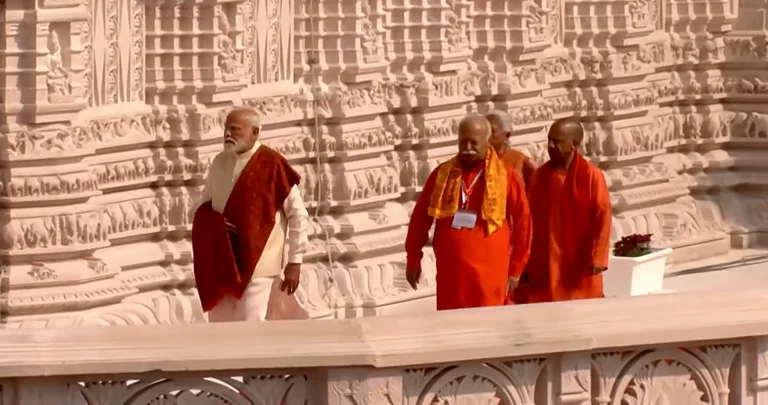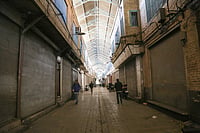The new Ram Lalla idol placed in the sanctum sanctorum of the newly inaugurated Ram Mandir in Ayodhya traces its origins to a Dalit farmer’s property in Karnataka.
The black stone used in the creation of the 51-inch idol comes from 70-year-old Ramdas H’s property in the Gujjegowdanapura village near Mysuru.
“I have 2.14 acres of land and wanted to clear rocks for agricultural purposes. We gave it to a local quarry contractor who cleared the stones and Yogiraj selected one among them (for making the idol),” Ramdas told the Indian Express.
The Dalit farmer is thrilled to have stone from his property utilized for the Ram Lalla idol, has pledged to donate a portion of his land for the construction of a Ram temple in his village.
Despite Ramdas’ donation which led to the making of the idol, which now sits inside the temple, he wasn’t invited to the grand consecration ceremony today in Ayodhya.
Srinivas Nataraj, a local quarry contractor who took up the work to clear the rocks, said that one huge rock was split into three blocks and Yogiraj chose one of the blocks. Since then, stone blocks from the property were again taken to carve idols of Bharatha, Lakshmana and Shatrughna, he said.
However, Nataraj disclosed that the mines and geology department fined him Rs 80,000 for illegal quarrying on the land. The fine resulted from information provided by informants before the stone delivery. Despite spending Rs 6 lakh to transport the stone block to Ayodhya, Nataraj has received only Rs 1.95 lakh from Srinath, connected to the trust. Nataraj is also not invited to the Ram Mandir inauguration on January 22, The Indian Express reported.
The Black Ram Lalla idol
There has been much debate on the colour of Ram’s skin even when choosing the Ram Lalla statue. Three sculptors were assigned the task, with Ganesh Bhatt and Arun Yogiraj carving the idol from bluish-grey Shyam-Shila stone sourced from Karnataka and Satyanarayan Pandey crafting a white idol using makrana marble from Rajasthan.
By using the black idol, there are scattered political opinions that assert the BJP is attempting to address the Dalit and Adivasi communities. These narratives stem from the repetitive evocation of Ram’s love for these marginalised communities by the ruling party.
During the launch of right-wing scholar Balbir Punj’s latest book, Tryst with Ayodhya, Defence Minister Rajnath Singh, said, “Ram is called Maryada Purushottam because he never differentiated among people on the basis of class, caste and creed.” Referring to the moment when Ram embraced the Nishad King—considered to be lower caste—Singh added, “Nishad King hesitated to embrace Lord Ram considering his caste. Prabhu Ram ruled out any difference and hugged him tightly.”
The tale of Shabri Mata, representing the Adivasi community, is invoked to strengthen Ram's connection to Adivasis. In the words of Punj, “When Ram took food at Shabri mata’s house, she was astonished as she thought her lower social dignity would be a deterrence.”
These narratives, along with Prime Minister Narendra Modi's visit to the OBC household of Meera Manjhi, are seen as BJP's signals to marginalised communities. The installation of the black idol and the use of ShyamShila from Karnataka suggest the party's focus on southern constituencies after recent electoral setbacks.


























